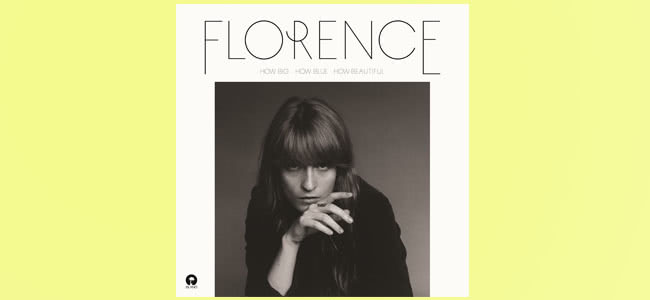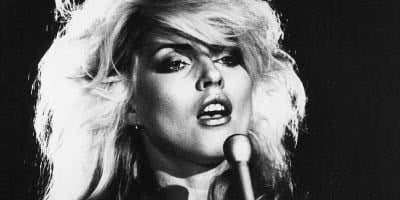This Friday, British songstress and all round ethereal being Florence Welch releases her third album under Florence and the Machine; How Big, How Blue, How Beautiful. ToneDeaf snuck in a sneak listen and the results are stunning. Here are the things we learnt from How Big How Blue How Beautiful.
This Record Is All About Them Pipes
On the album’s second track ‘What Kind of Man’ Florence reminds us what made us fall in love with her initially. The fact that girl got soul. What starts as a sweet lament, suddenly with the rumble of drums she starts to howl like a jilted siren. It’s a welcome return to form to hear more growls from the Terpsichorean Florence.
‘Caught’ is a bluesy rock number you’d be forgiven for mistaking it for a Fleetwood Mac track. Florence’s voice on this track knows how to tenderly seduce you and she has learnt how to delicately embrace its strength. When it is let go it no longer feels like it plateaus, it lifts the emotional peak of the song. She knows her voice better and realises its not when you belt that’s brilliant, its when you are about to and directly after.
It’s Where The Land of Myth Meets the Land of Man
The images of Raphael and the Gothic still pepper this album but unlike Lungs and Ceremonials, that lives in a land of myth and fairytales, Florence uses her undeniable love for the majesty of Renaissance themes and brings them to the real world.
We see the detailed filigree of her cathedral-like sound. What was once detailing her stories about sacrificing herself for the gift of courage (Lungs ‘Rabbit Heart’), now she details her life using her love of myths and legends to detail a morale tale of her own reality.
Tracks such as ‘Delilah’, ‘St Jude’ and ‘Third Eye’ take their titles from the theology but instead of rehashing the stories, Florence subverts their meaning. ‘Delilah’ becomes a story of Florence as she moves through despair and rejoicing for leaving a relationship aiming for the freedom using the image of ‘Delilah’ as a story of a woman asserting independence.
Arcade Fire Producer Markus Dravs Does It Again
A longtime Arcade Fire fan, Florence recruited the producer of their Grammy award winning album The Suburbs, Markus Dravs. For this instalment they open with a shimmering folk inflected number ‘Ship to Wreck’ and you can hear the buoyant torment that Dravs draws out from performers like Arcade Fire and Mumford and Sons (another band he’s produced).
Florence chose Dravs due to his assistance in engineering Bjork’s Homogenic and although the only thing linking these two works is that they are helmed by emotionally powerful female performers, Dravs brings out the emotional landscape of Florence’s work, he transforms the songwriting to majestic heights of Florence’s vision.
The Sky Is The Limit With Brass That Shines Like The Sun
The sound of How Big How Blue How Beautiful has more oxygen and air than the neptunesque density of Ceremonials and it allows Florence’s voice to have moments that float like dandelion seeds.
If Florence’s albums were classical elements, Florence seems to have moved from the dark and dangerous world of the woods (Lungs), the crushing pressure of the sea (Ceremonials) and now is in flight with the storms, the sun and the wind of How Big, How Blue How Beautiful.
Brass arrangements are what brings the light and warmth of this album and eloquently paints the albums themes of chaos and hope. Goldfrapp’s Will Gregory masterfully narrates the songs with his cinematic brass choirs that beam with energy and emotion. The title track has the works, with the brass mercilessly singing with joy at the wonders of immense possibilities.
The Orchestra Reigns Supreme
The Machine has grown from a few of Florence’s friends and now How Big How Blue How Beautiful has reigned in the glory of a bright shiny orchestra. Rather than the dark sounds of an underworld ensemble, the orchestral scoring of How Big How Blue How Beautiful flies like a Chinese lung dragon, interplaying with the clouds and playing with the sun. This is especially apparent as it opens and then backs the anthemic ‘Queen of Peace’ as well as the following track of ‘Delilah’.
[include_post id=”434044″] What is odd is the signature instrument of The Machine, the majestic harp (played by Tom Monger) is remarkably absent from most of the tracks. From the few live performances from How Big How Blue How Beautiful the harp is still a core live instrument, but Monger has moved to moving in a multi-instrumental capacity helming the vibrant glockenspiel for ‘Ship To Wreck’.
Its refreshing to hear the sonic palette of Florence and the Machine begin to move away from what was in many ways the core complaint of Ceremonials, its reliance on sonic signatures to cover what was rather substandard songwriting.
Her passing affair with electronics has some hits and misses
‘St. Jude’ flickers in some tasteful electronics like a filament in the old bulb, hissing and sizzling. And its swathes of the neon light organ transport you to a desert chapel. But then comes ‘Mother’, which is not a bad song at all. It’s a welcome return to her garage rock based roots while embracing the vocal acrobatics. But it fails by overindulging in psychedelic nostalgia with the electronics.
You can hear the Silver Apples rhythm loop and the rehashed ‘A Day In a Life’ style production that strangles rather than lift the song. Paul Epworth, who produced Florence’s last two albums, produced ‘Mother’. It seems an interesting idea to indulge in Florence’s love of psychedelia (being an avid Grace Slick fan) but it is out of touch with the rest of the album and seems a bit textbook.
Conclusion
How Big How Blue How Beautiful is a more emotionally mature record for Florence combining the emotional intensity of her voice to sylphindine tenderness, like brushing hair from a cheek.
She has grown from a cool commodity, a visual centrepiece and a fairytale. She is living and breathing work of pure humanity. And isn’t that the great creation of them all?
How Big, How Blue, How Beautiful is Friday the 29th via Universal.




































